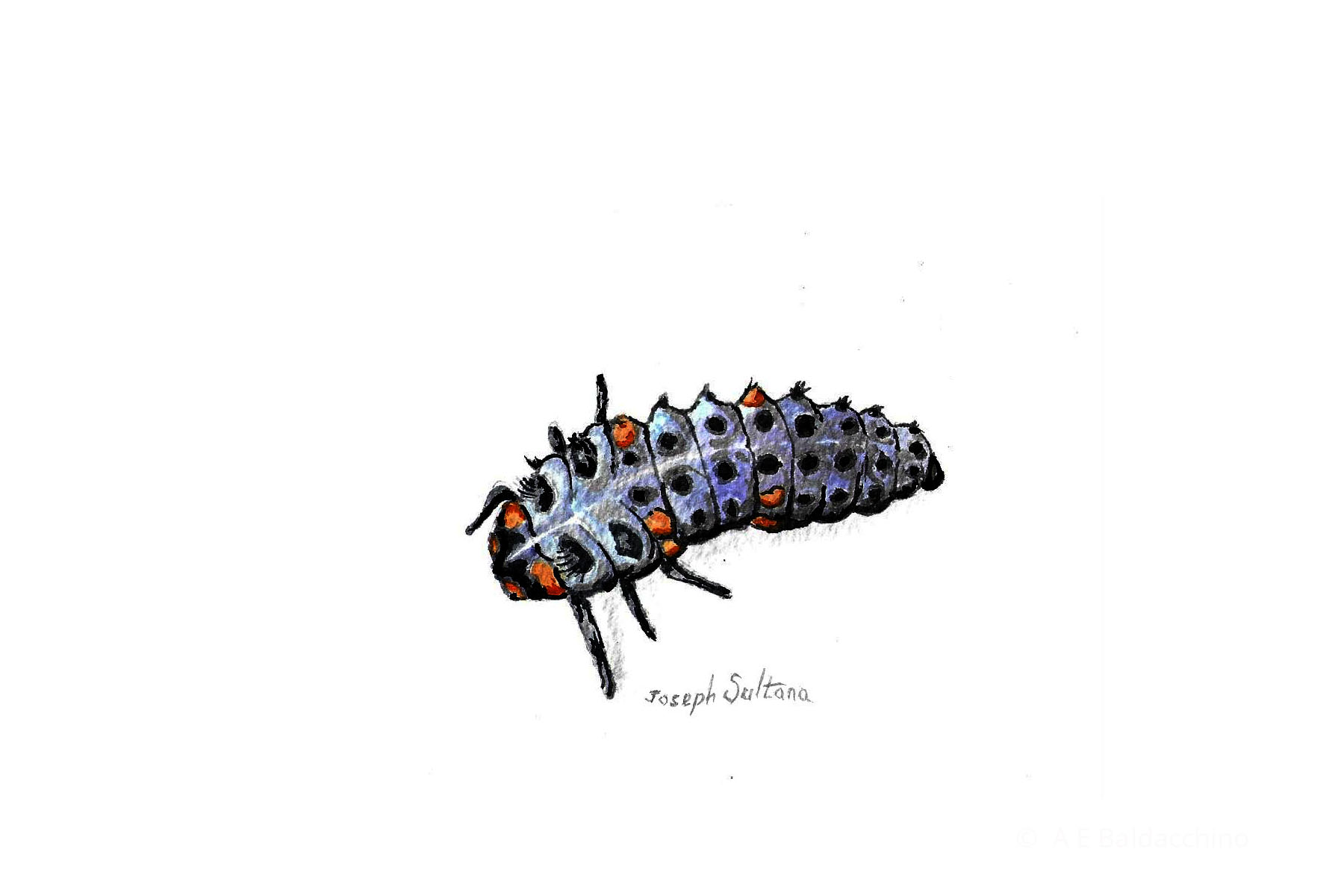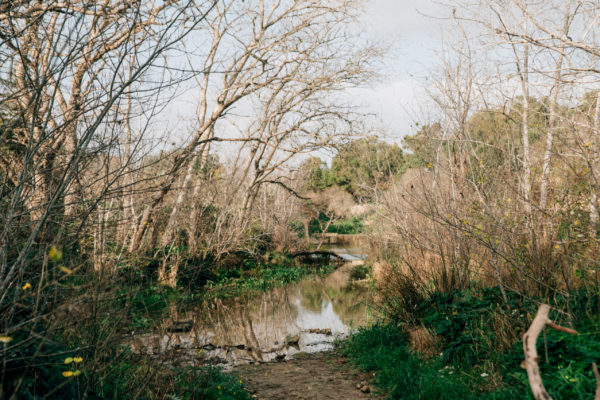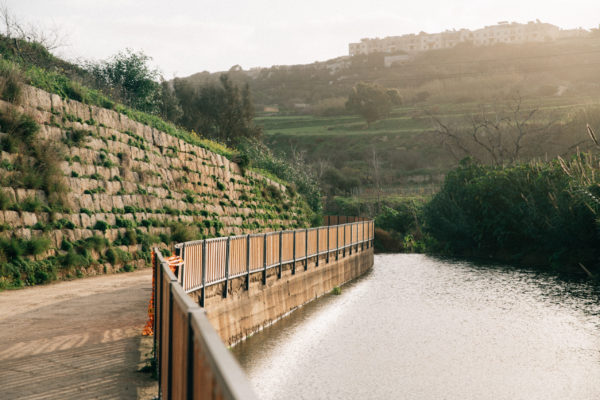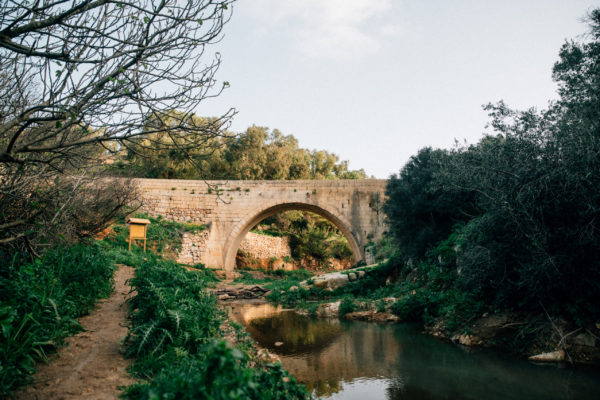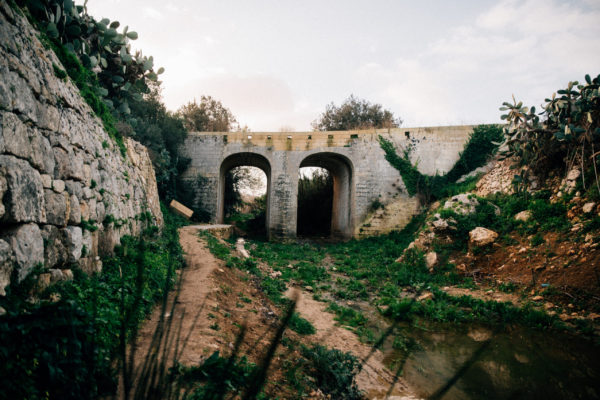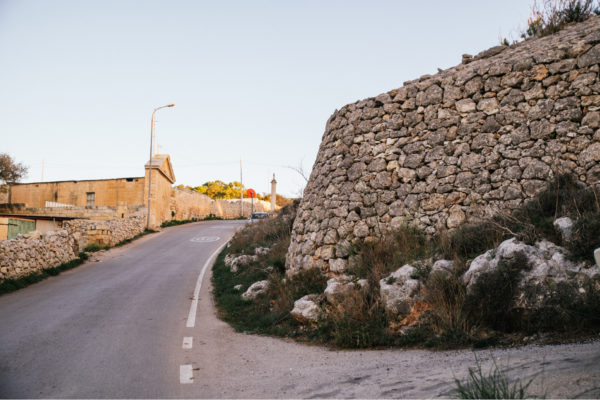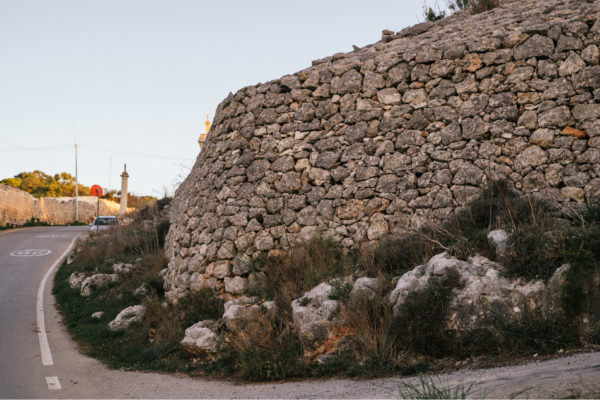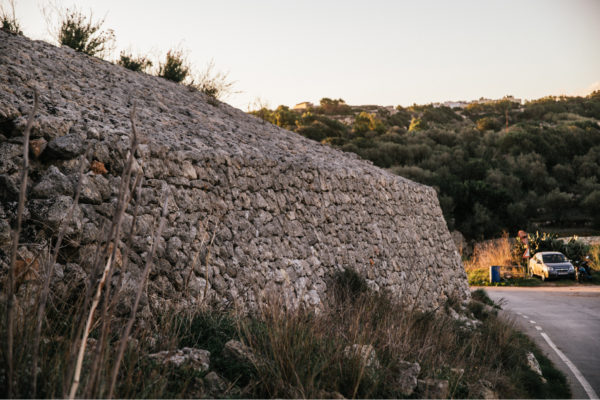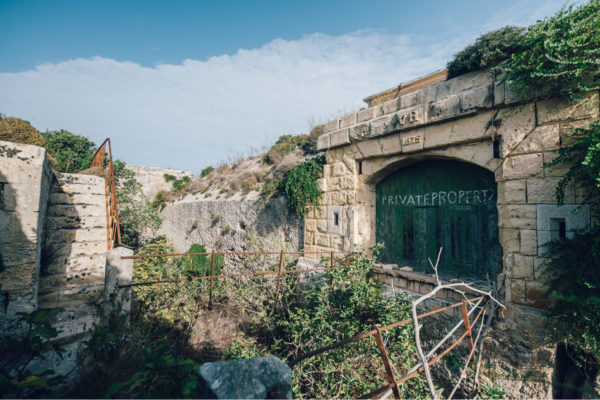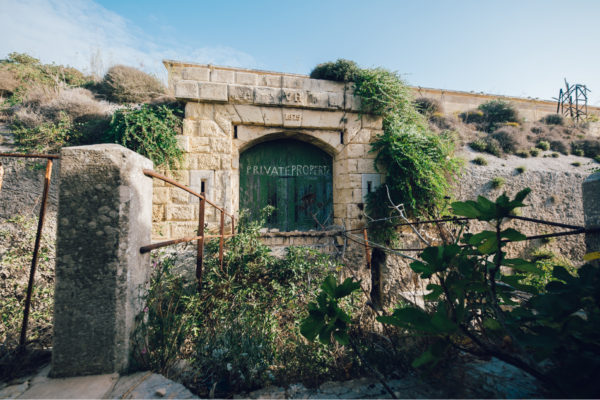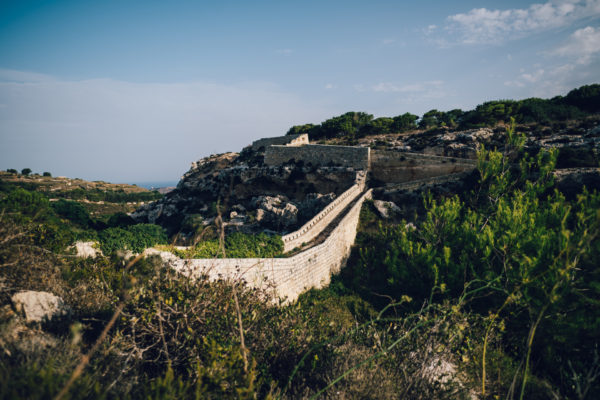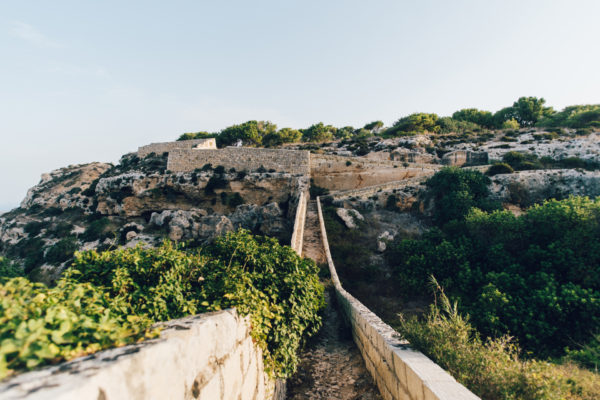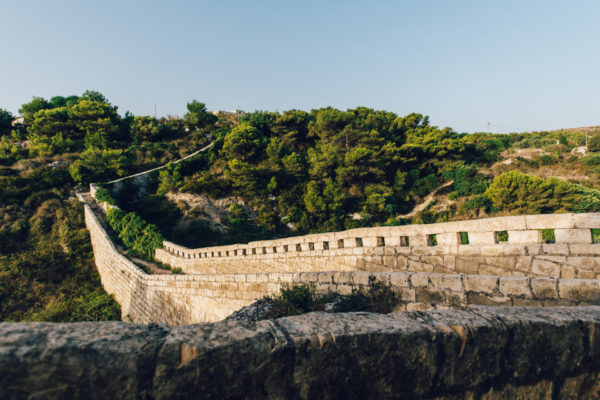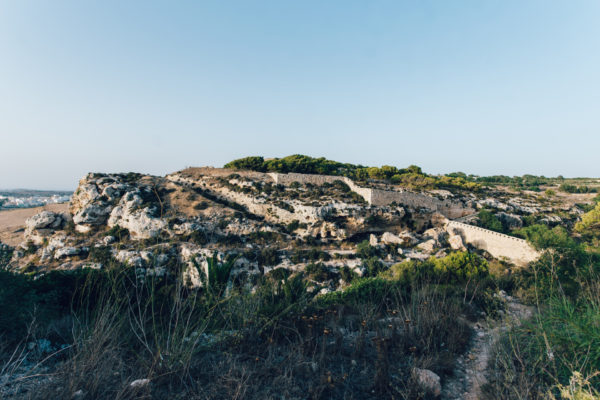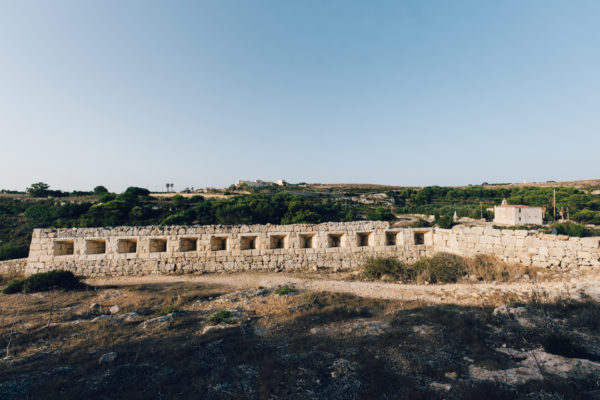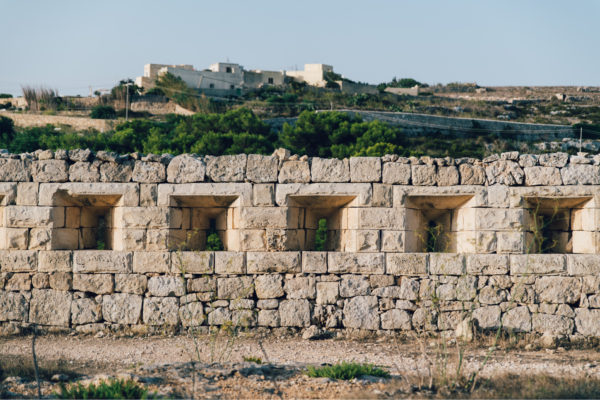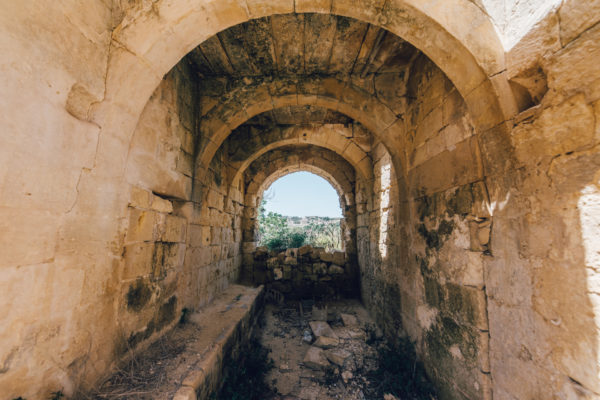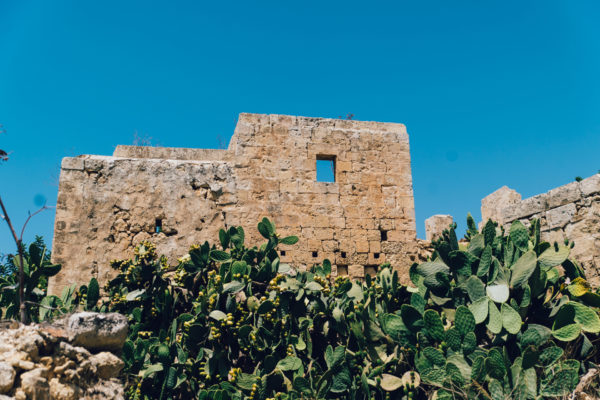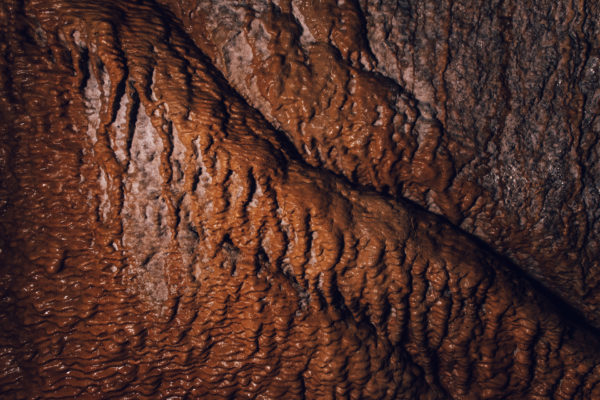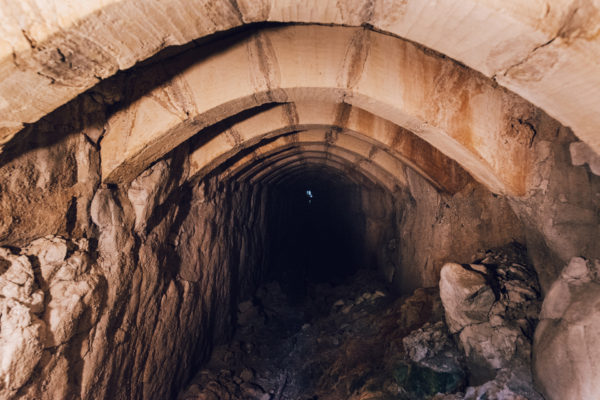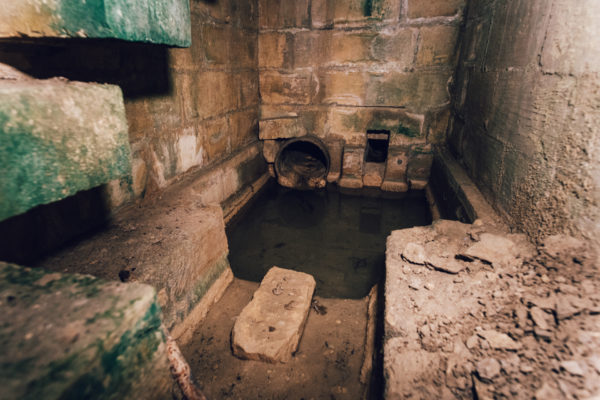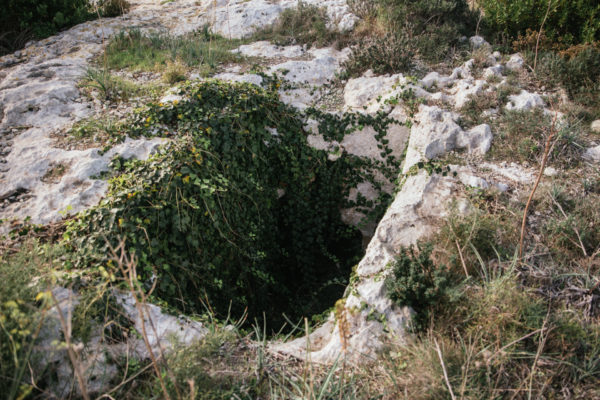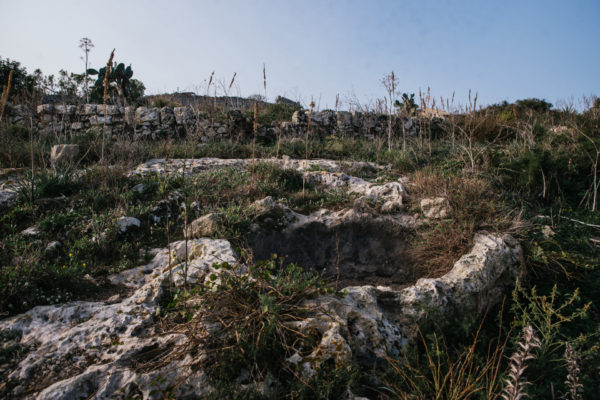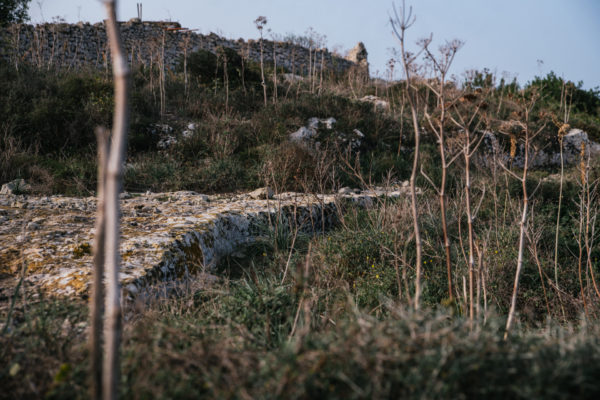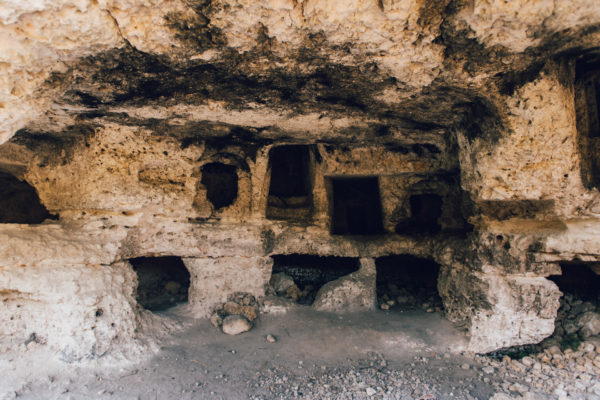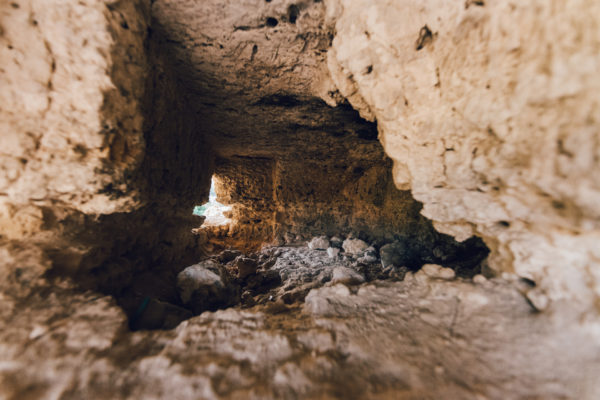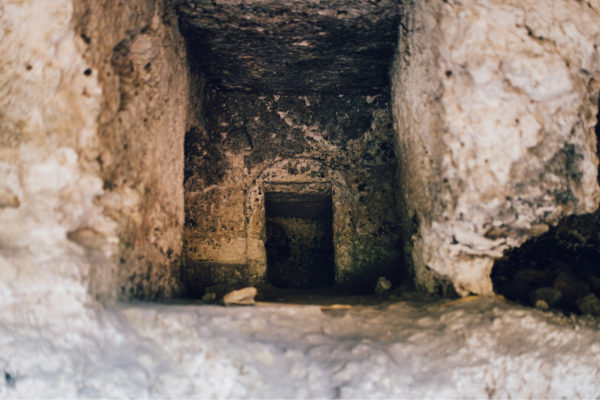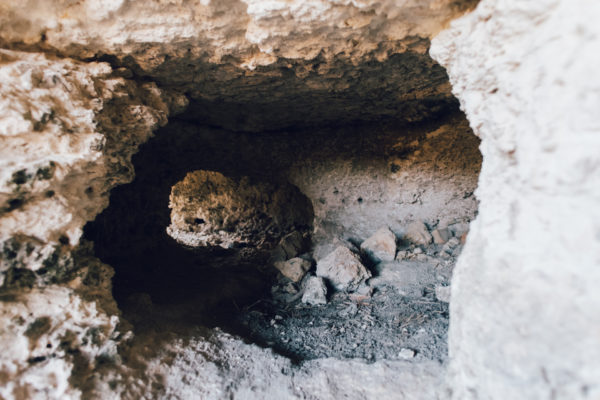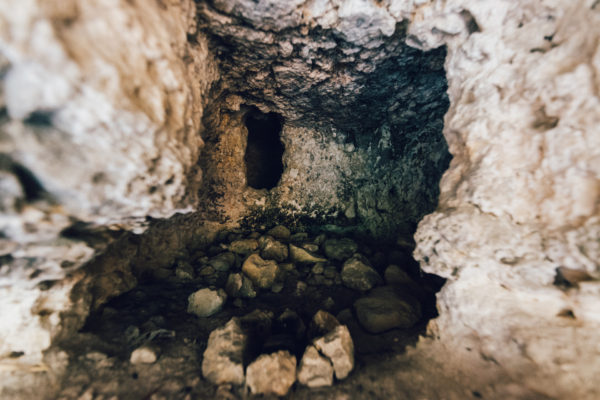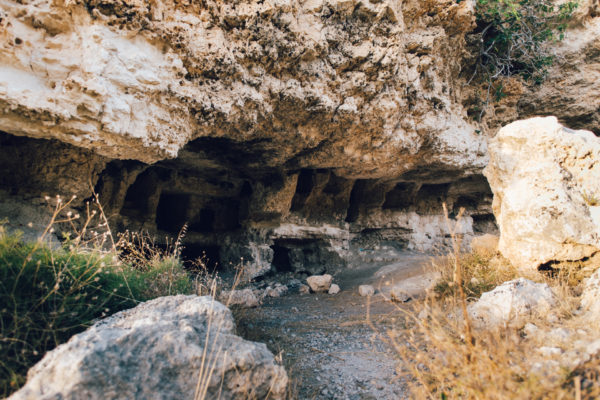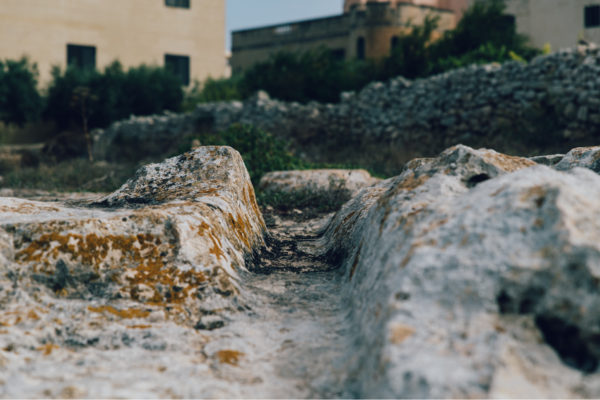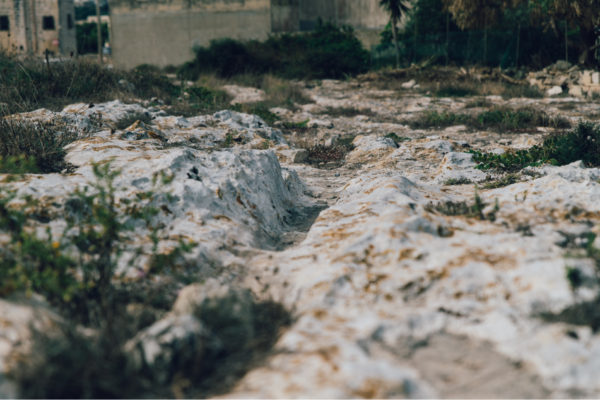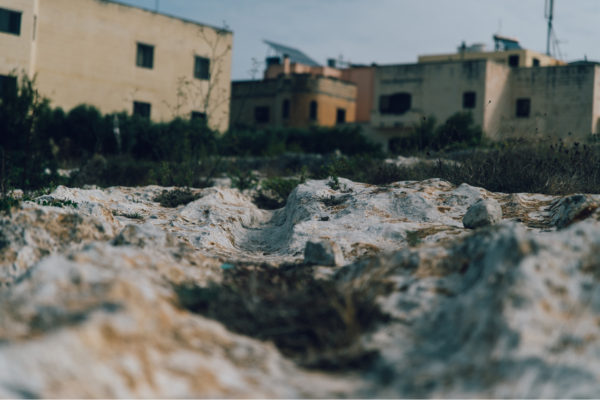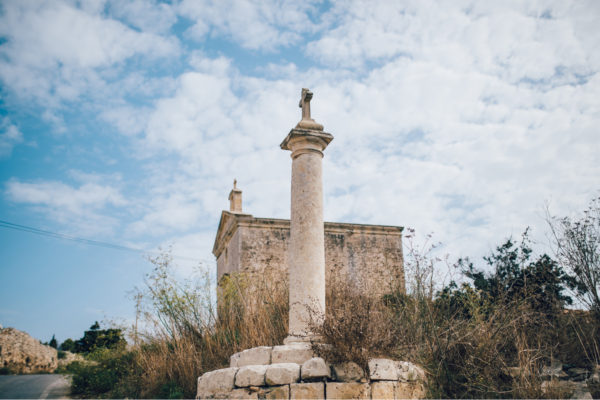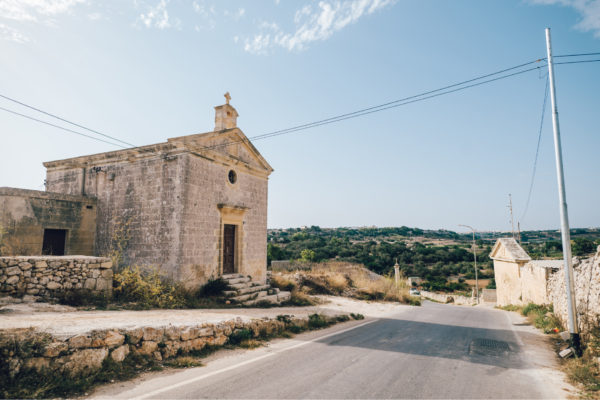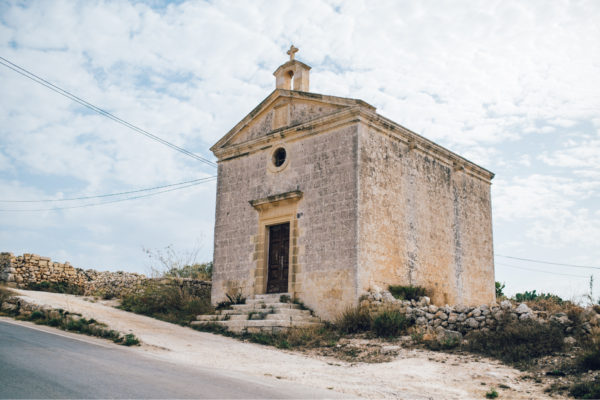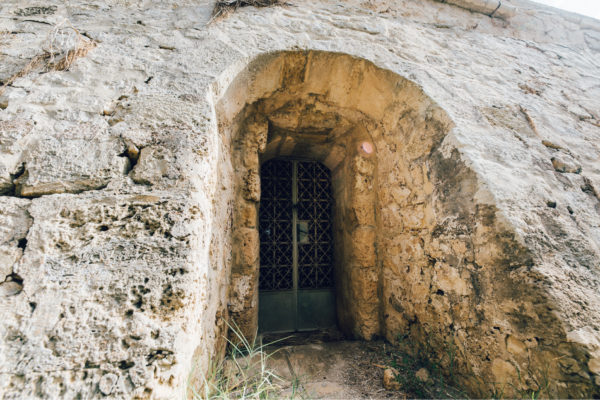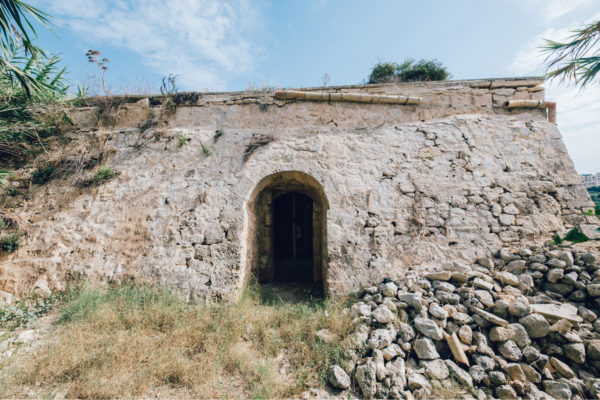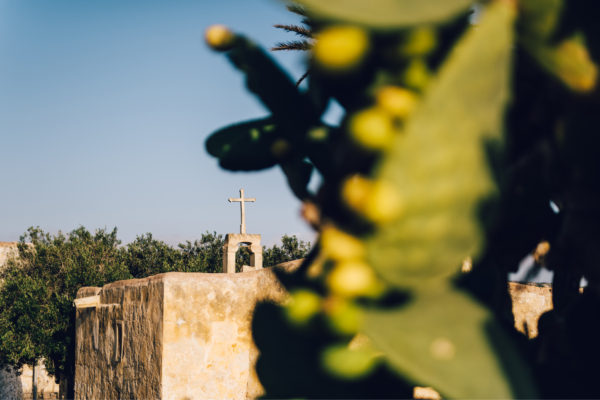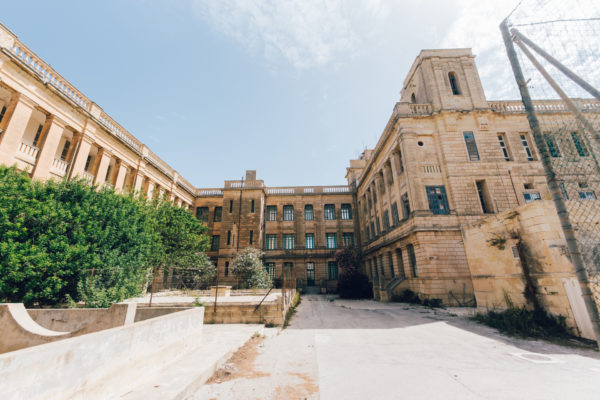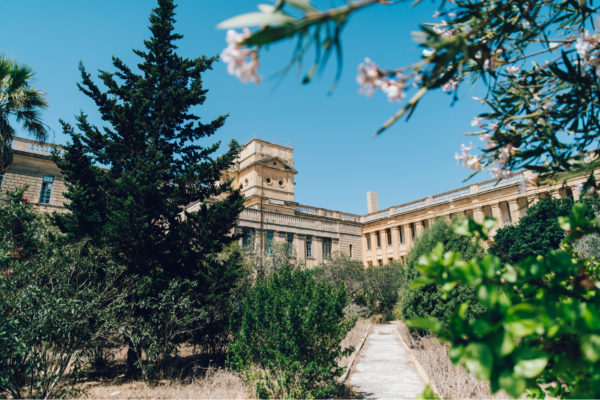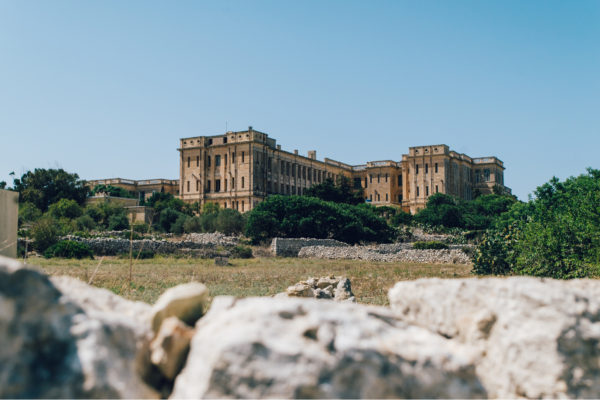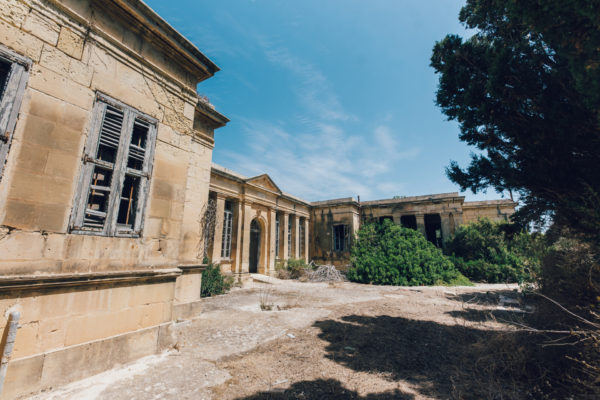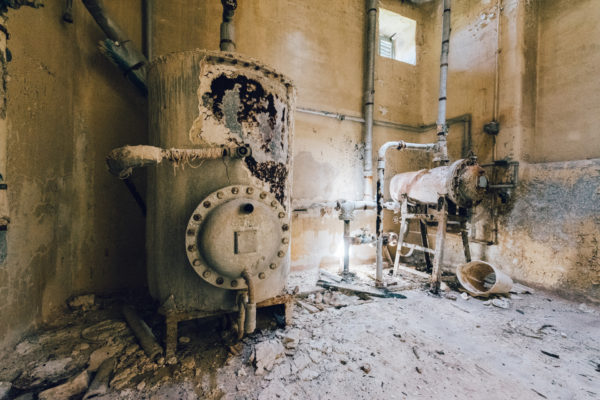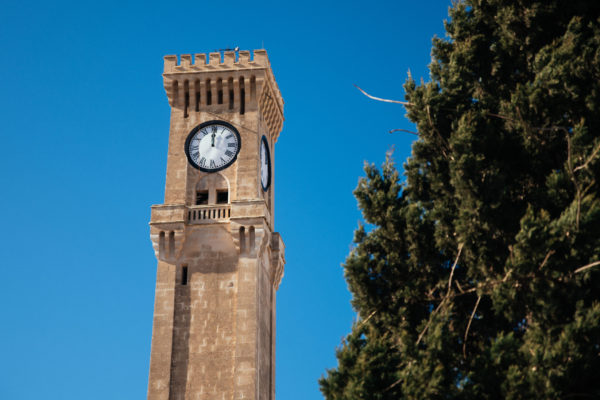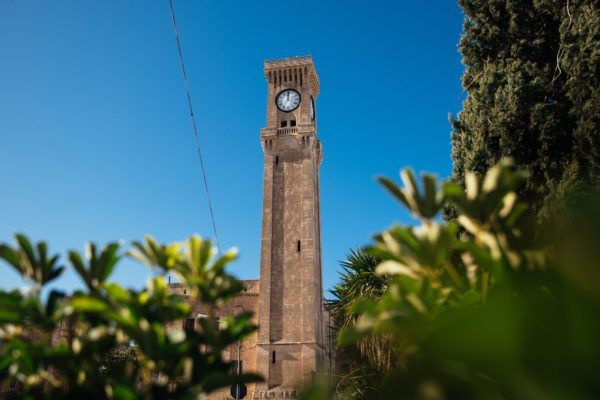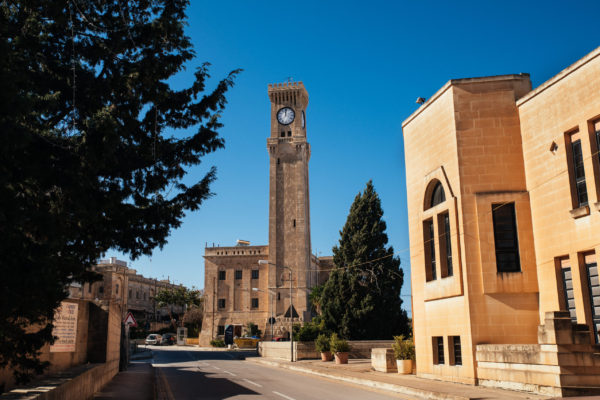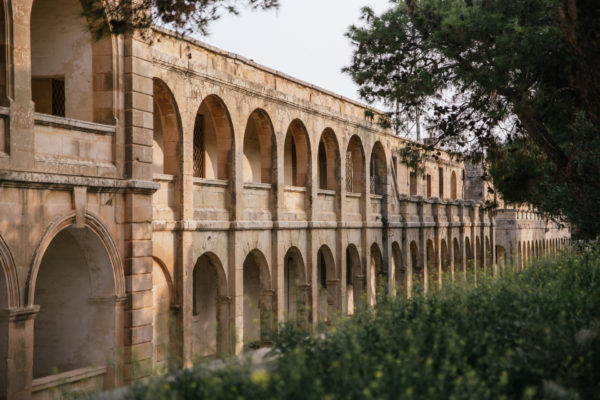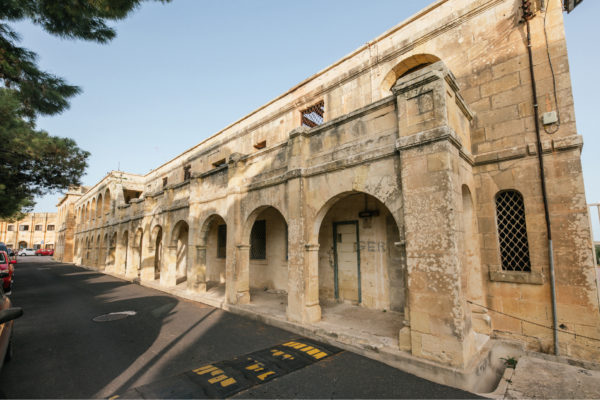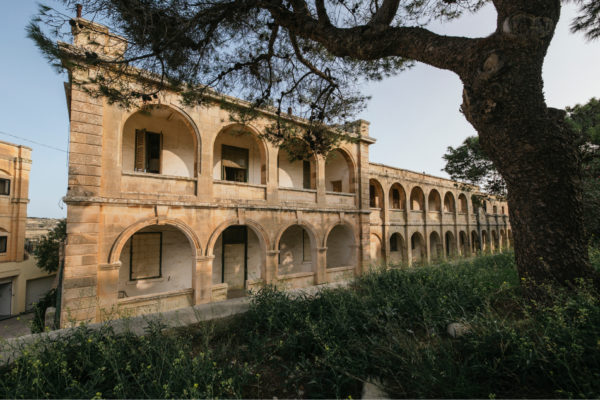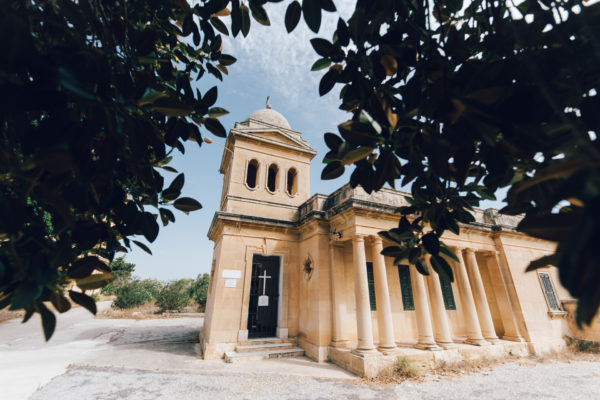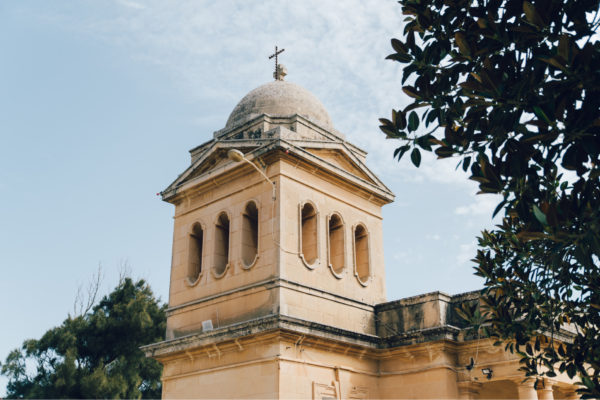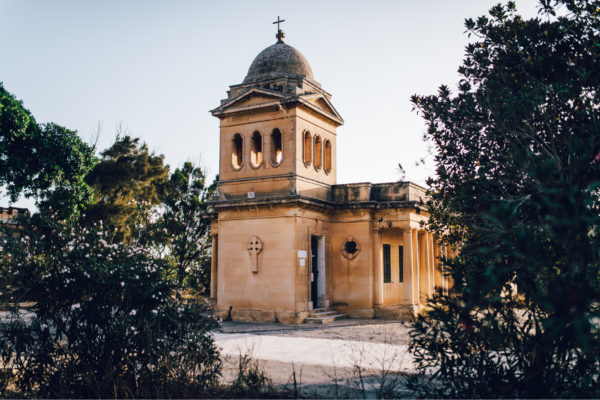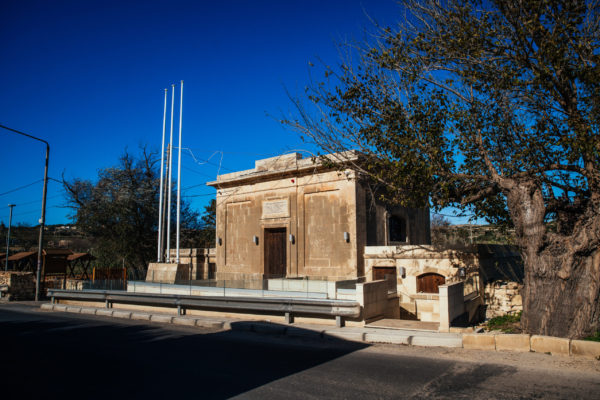The seven-spot ladybird is an insect belong to the beetle order. It has a body length of 7.6 to 10 mm, with distinctive orange-red front wing covers. These protect the two hindwings beneath, and sport the characteristic seven black spots. They are placed three on each wing covers. These and one where the two covers join together. In front of this one spot there are two white patches on either side. The seven spot ladybird is dark black from benath.
The ladybird flies during the day.
The red colour with the distinctive spots helps against predators. Its secretion of fluid gives a foul taste. It also plays dead when threatened.
Like all insects, the life cycle of the ladybird has four stages. It starts as an elongated, oval egg which the female lays in an upright position on plants in early spring and summer. These hatch after approximately four days.
The larva which hatches from the egg, eats the egg shell. It sucks fluid from aphids, and when older will eat the aphids. The larva moults three or four times, depending on the availability of food and temperature. After approximately 13 days it attaches itself to vegetation from its abdomen, and changes into a pupa.
The pupa is either light orange or dark brown, or blackish depending on the temperatures. The ladybird emerges from the pupa after approximately 8 days.
The adults mature after 10 to 14 days. Females can lay from 250 to 500 fertilised eggs in their lifespan, 15 eggs in each batch, mainly in spring and early summer.
Adults overwinter under tree barks and rocks, in ground litter, and in gardens.
Adult ladybirds are renowned for feeding and controlling aphid pests, though they can also take pollen and nectar. Ladybirds are used in biological control.
Because of the indiscriminate use of pesticides and loss of habitat, the seven spotted ladybird is on the decline across the Maltese Islands.


